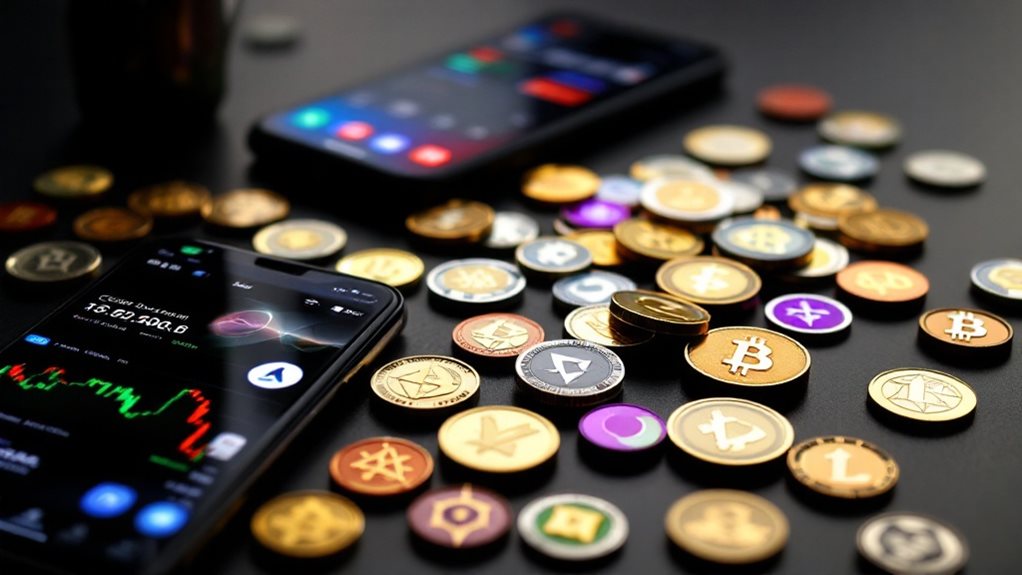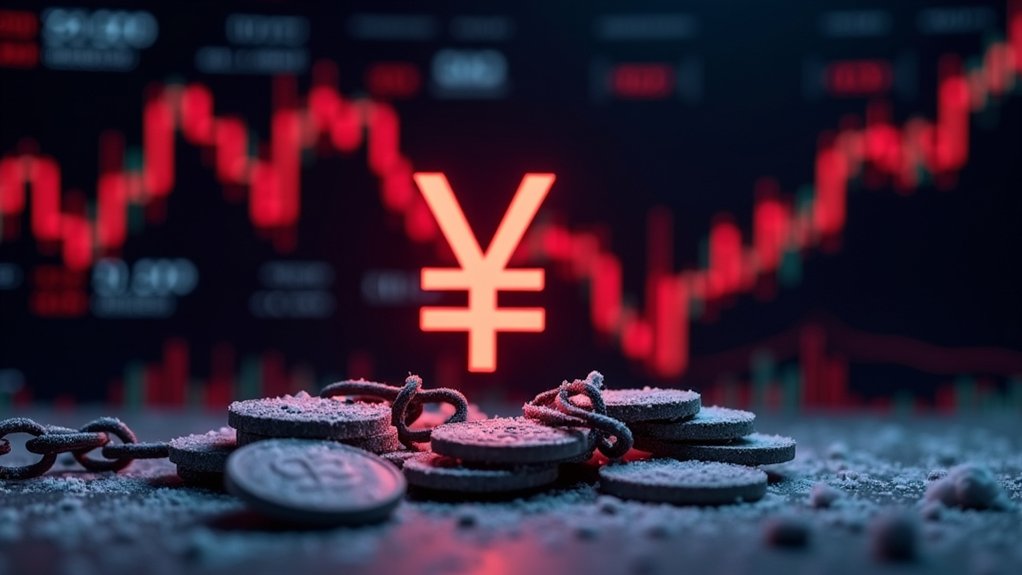Buying altcoins starts with selecting a reputable cryptocurrency exchange like Binance or Coinbase. After creating an account and completing identity verification, users can fund their accounts through bank transfers or credit cards. Researching potential altcoin investments involves analyzing market data, development teams, and project goals. Once funded, trades can be executed using market or limit orders. Hardware wallets provide secure storage for long-term holdings. Understanding these fundamentals opens the door to successful altcoin trading.
Quick Overview
- Choose a reputable cryptocurrency exchange like Binance or Coinbase that offers your desired altcoins and has strong security features.
- Create an exchange account, complete identity verification, and set up two-factor authentication for secure trading access.
- Research potential altcoin investments by analyzing market data, development teams, whitepapers, and community support.
- Fund your exchange account using bank transfers or credit cards, then place market or limit orders to purchase altcoins.
- Secure your purchased altcoins using hardware wallets for large amounts and software wallets for regular trading.

Many cryptocurrency investors are discovering that altcoins offer interesting alternatives to Bitcoin. The first step in buying altcoins involves choosing a reputable cryptocurrency exchange. Investors typically compare various exchanges, looking at their fees, security features, and the variety of altcoins available for trading. Popular exchanges like Binance and Coinbase regularly list new altcoins for trading.
Once they’ve selected an exchange, they create an account, complete the required identity verification, and set up two-factor authentication for added security. They can then fund their accounts using bank transfers, credit cards, or existing cryptocurrency holdings. Today’s market includes over 6,000 cryptocurrencies available across different exchanges. Investors often choose coins like XRP for cross-border payments due to their faster transaction speeds and lower costs.
Before making any purchases, successful investors research potential altcoin investments thoroughly. Understanding cryptocurrency basics is essential before investing any money. They examine factors like market capitalization, trading volume, and the project’s underlying technology.
They also look into the development team’s background, the coin’s use case, and community support. The project’s whitepaper and roadmap provide additional insights into its long-term potential, while consideration of risk tolerance helps with portfolio diversification decisions.
When investors are ready to buy altcoins, they have several options for executing their purchases. They can place market orders to buy immediately at current prices or use limit orders to specify their preferred purchase price.
Many beginners start with small amounts to familiarize themselves with the trading interface. After placing orders, they monitor the transaction status to guarantee successful completion.
Security becomes paramount once investors own altcoins. Many choose hardware wallets for storing large amounts of cryptocurrency, especially for long-term holdings.
Software wallets serve as convenient options for smaller amounts and frequent trading. Investors store their private keys and recovery phrases in secure, offline locations to protect their investments.
Regular updates to wallet software help maintain security, while portfolio tracking allows investors to monitor their investments’ performance.
The process of buying altcoins continues to evolve as the cryptocurrency market matures. Exchange platforms regularly update their features and security measures, while new storage solutions emerge to meet investors’ needs.
The cryptocurrency community shares experiences and knowledge through various online forums and social media platforms, helping newcomers navigate the space.
As with any market, conditions can change rapidly, and investors stay informed about developments in their chosen altcoins and the broader cryptocurrency ecosystem.
Regular portfolio review and rebalancing help investors maintain their desired investment strategy as market conditions shift.
Frequently Asked Questions
How Can I Identify Promising Altcoins Before They Become Popular?
Investors often spot promising altcoins by researching project fundamentals. They look at the team’s experience, check if the project solves real problems, and examine the whitepaper.
They’ll monitor GitHub activity to see if developers are actively working on the code. Smart investors also track community growth on social media, review partnerships with established companies, and verify if the project has passed security audits.
What Are the Tax Implications of Trading Multiple Altcoins?
Trading multiple altcoins creates several tax events. Each trade between different cryptocurrencies counts as a taxable transaction.
The IRS treats crypto-to-crypto trades like selling one asset to buy another. Short-term trades (held less than a year) face higher tax rates than long-term holdings.
Every transaction needs to be tracked, including the date, cost basis, and value at the time of trade. Tax reporting happens on Form 8949 and Schedule D.
Can I Mine Altcoins Instead of Buying Them?
Yes, altcoins can be mined instead of purchased. Mining requires specialized computer equipment and significant electricity.
Miners use their computers to validate transactions and create new coins. Some altcoins can be mined using graphics cards (GPUs), while others need special mining machines called ASICs.
Mining costs include hardware, electricity, and cooling systems. The process can be profitable when coin prices are high and electricity costs are low.
Which Hardware Wallet Offers the Best Security for Storing Altcoins?
The Ledger Nano X offers extensive security features and supports over 5,500 cryptocurrencies, making it a top choice for altcoin storage.
It keeps private keys in a secure chip and uses two-factor authentication.
The NGRAVE ZERO provides the highest security certification (EAL7) but only supports 15+ coins.
The Trezor Model T comes with a touchscreen interface and secures 1,800+ cryptocurrencies through offline storage and PIN protection.
How Do Altcoin Airdrops Work and How Can I Participate?
Altcoin airdrops are free token distributions to cryptocurrency wallet addresses.
There are different types: standard airdrops need just a wallet signup, holder airdrops require owning specific tokens, and bounty airdrops ask users to complete tasks like social media sharing.
To participate, users need a compatible crypto wallet and must follow the project’s requirements.
Projects announce airdrops through their websites and social media channels, then distribute tokens on set dates.





